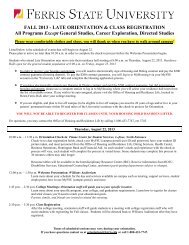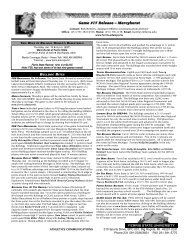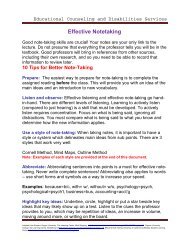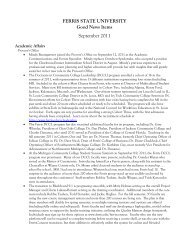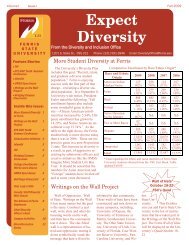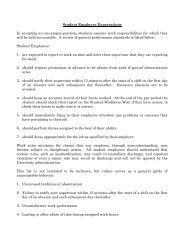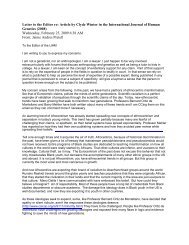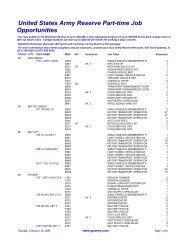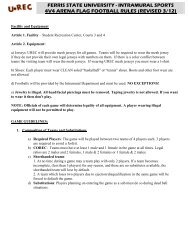Daniel Gasman - Ferris State University
Daniel Gasman - Ferris State University
Daniel Gasman - Ferris State University
Create successful ePaper yourself
Turn your PDF publications into a flip-book with our unique Google optimized e-Paper software.
The intention of Monism was to overcome the separation of man from nature occasioned by dualistic<br />
Christianity and its by-product, Cartesian logic, as well as by modern mechanistic science – the science<br />
that Gliboff erroneously assigns to Haeckel – with its damaging industrial and technological creations,<br />
indeed by all dualisms be they religious, scientific, cultural, or political.<br />
Haeckel can be more accurately classified among those scientists depicted by the Symbolist art critic,<br />
Albert Aurier, in 1892 – the year of Haeckel’s religious and proto-Nazi manifesto, Monism as Connecting<br />
Science and Religion – who ‘after having proclaimed the omnipotence of scientific observation and<br />
deduction’ return to the ‘most bizarre theogony, the maddest metaphysical reverie.’ 51 In its religious and<br />
spiritual devotion, Haeckel’s Monism may be said to have contributed to what Gilbert Durand has termed<br />
the ‘return of Hermes,’ 52<br />
of Monistic hermeticism or occultism in the post-positivistic late nineteenth and<br />
early twentieth century, rather than to perpetuating the tenets of an increasingly moribund and superficial<br />
materialistic positivism.<br />
The summa of Monism, as of hermeticism, was the conviction that it had virtually solved the ‘Riddles<br />
53<br />
of the Universe,’ that it had attained a magical unlocking of all secrets, so that Haeckel and the Monists<br />
could claim to that of Judaism and Christianity. Accordingly, Haeckel’s belief in spontaneous generation<br />
effected in the slime at the bottom of the ocean, and his celebrated Recapitulation Theory, that ontogeny<br />
recapitulates phylogeny, 54<br />
were not simply materialistic hypotheses as Gliboff mistakenly claims, but the<br />
Monist equivalents of the ancient and venerable myths of the origin of life out of darkness and the<br />
primeval mud, the transmutation through the process of dissolving and coagulating of one form of matter<br />
into another form of matter that was made possible by their shared divine component. – These<br />
51<br />
Albert Aurier, ‘Symbolist Painters,’ [1892], quoted in Herschel B. Chipp, Theories of Modern Art, Berkeley:<br />
<strong>University</strong> of California Press, 1968, 93-94.<br />
52<br />
Gilbert Durand, ‘Le XXe Siècle et le retour d’Hermès,’ in Figures mythiques visages de l’oeuvre de la<br />
mythocritique à la mythanalyse, Paris, 1979, 243-306.<br />
53<br />
It should be noted that Gliboff, while listing Haeckel’s Riddle of the Universe in his bibliography, hardly ever<br />
refers to it.<br />
54<br />
Gliboff misleadingly explains Haeckel’s Recapitulation Theory to be a wholly mechanical explanation for the<br />
process of evolution.<br />
23



